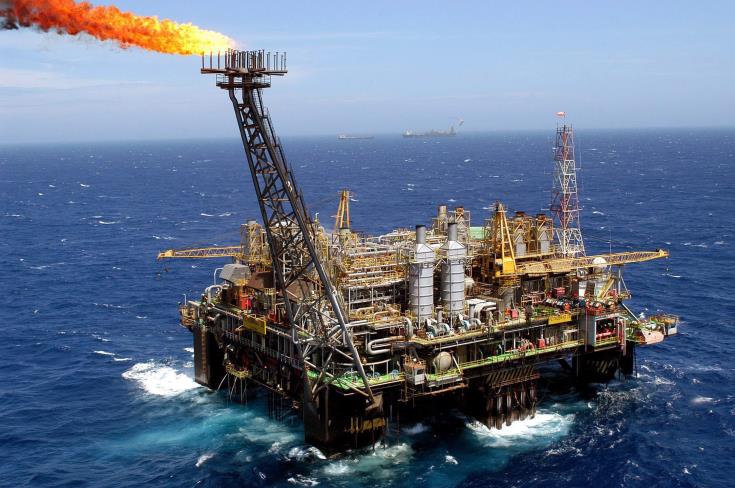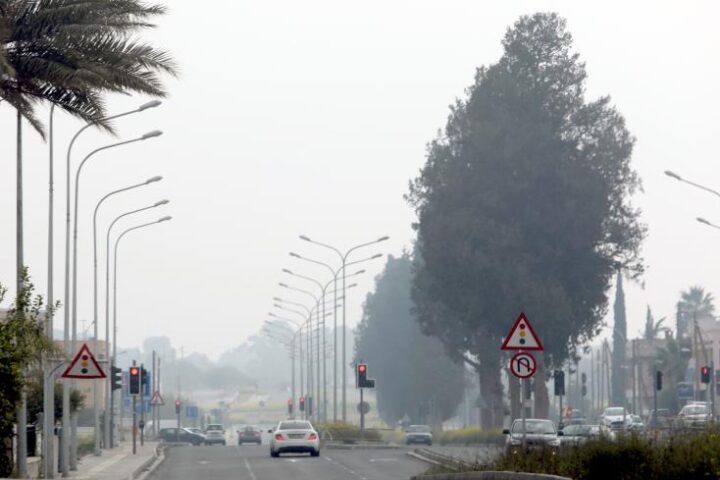Transatlantic trade disputes are moving to a new US-controlled rhythm and increasingly, the US is acting without consulting its European allies.
Because of the EU’s deep and growing security dependence on the US, it means European governments have little choice… and end-up paying the cost.
US Energy Secretary Jennifer Granholm made quite an admission when she said, “oil and gas is going to remain a part of our energy mix for years to come.”
“We know that even the boldest projections for clean energy deployment suggest that in the middle of the century we are still going to be using abated fossil fuels.”
Wind, solar and batteries increasingly account for more new US power capacity additions. In 2023, these three technologies account for 82% of the new, utility-scale generating capacity, with natural gas, coal and oil providing 18%.
SVB collapse
Goldman Sachs economists said they no longer expect the Fed to deliver an increase in borrowing costs next week, even after US authorities moved to contain the turmoil spurred by the exodus of depositors from Silicon Valley Bank (SVB) and Signature Bank.
This often happens following tightening of monetary policy after a period of easy money. It causes the failure of one or more institutions that made imprudent loans or are unable to adapt to changing conditions fast enough.
Following the SVB bank-run, most institutions are likely to tighten lending standards and increase deposit rates as they attempt to fortify their balance sheets. Tougher lending standards will in turn contribute to the business cycle slowdown already underway in the US, mostly in manufacturing.
The fallout from the SVB collapse appears to have been contained. But the after-effect is that traders increasingly believe that concerns about financial stability will constrain future interest rate increases and weaken economic activity.
In just a week, oil prices declined by over 5% as traders worry that the implied weakening of economic activity may reduce demand for petroleum and consumption over the rest of 2023. However, the impact may prove to be much more limited.
The danger, though, is that if SVB’s failure causes a more widespread reassessment of lending standards and balance sheet strengthening, oil prices are likely to remain under pressure.
Meanwhile, the US Treasury Department, Federal Reserve and Federal Deposit Insurance Corp said they are introducing a new backstop for banks that would be large enough to protect the entire nation’s deposits – hoping this will calm depositors and restore stability.
China
Presidential envoy John Kerry said that regrettably work between US and China has stalled amid wider tensions between the world’s two largest greenhouse gas emitters.
Earlier this month, China’s state planner underlined a greater role for coal in its power supply, saying the fossil fuel would be used to improve the reliability and security of its energy system.
Fluctuating output from renewable plants – as happened with hydropower last year – has led Chinese policymakers to lean on reliable and easily dispatchable coal power to shore up the country’s baseload supply.
Oil
Long-dated oil prices are too low for comfort. The futures market is mispricing the outlook for crude. It is a puzzling mismatch.
The oil industry says it is underinvesting in future production capacity, creating the risk of future shortages and higher prices.
Yet, long-dated oil prices keep falling, sitting now at $65/barrel, suggesting that the market expects spending would be more than enough to avoid a gap. Either the industry is wrong or the market is. Most probably the latter.
Last year, the oil and gas industry spent $499 bln on production, according to the International Energy Forum.
If the industry is to meet future oil demand, the IEF estimates that spending would need to rise to $640 bln by 2030.
But the guidance from companies suggests such an increase isn’t on the cards. The message that ‘investment-is-too-low-to-meet-future-demand’ was accompanied by warnings about rising oil prices in the future.
That was also the view of Aramco CEO Amin Nasser who cautioned that he still did not see enough investment to sustain demand in the long-term going into the sector, saying that supply wouldn’t be adequate in the mid- to long-term if that trend continued.
Oil consumption is growing in 2023 at double the typical annual rate, and the early forecasts for 2024 also point to a further acceleration.
In other words, the futures market is mispricing the outlook for crude oil. Overall, the expectation is that long-dated oil prices are poised to rise.
Vitol believes that China’s crude oil demand in 2023 could be one of the best and could surpass recent previous levels.
Aramco’s Amin Nasser agrees. He said the oil market is tightly balanced. This means that increasing demand will put pressure on prices.
After posting record $161 bln profit on the back of strong crude prices, Saudi Aramco said it will increase production capacity to 13mn barrels a day, from 12mn at present, by investing $45 bln to $55 bln in 2023.
Demand for fossil fuels is running at an all-time high and is expected to carry on increasing next year as well (so are CO2 emissions).
But climate change forecasts and scenarios point in the opposite direction. Either consumption of oil, gas and coal is about to truly collapse, or there’s a lot of hot talk and greenwashing. Or, more likely, the world is not yet ready to live without fossil fuels.
Peak-oil fears cast a shadow over US supply outlook as costs climb. The spectre of peak-oil that haunted energy markets during the first decade of the 21st century is once again rearing its head.
US oil executives say OPEC is back in charge as US shale oil growth flags. They are warning that the balance of supply and demand is ‘on a razor’, which could lead to a jump in crude prices.
The growing demand for plastics is also driving global oil and gas demand and it is expected to offset reductions due to the transition away from fossil fuel. By 2050, 20% of global oil demand will go into the production of petrochemicals.
Natural gas
While visiting Italy, Prime Minister Netayahu said Israel wants to increase gas exports to Italy and Europe. But he seems to be ignoring the fact that the EU is reducing gas consumption, accelerating transition away from fossil fuels beyond 2030, and Chevron is going ahead with an FLNG at Leviathan for exports globally.
An FLNG at Leviathan will put a final stop to the idea of the EastMed gas pipeline, favoured by East Med politicians. There will not be enough gas for both projects.
Chevron CEO Mike Wirth said at CERAWeek that natural gas markets have been fundamentally changed by war.
He said: “We have to be very careful about turning systems off prematurely and depending on a system that doesn’t yet exist and hasn’t been proven”.
Wirth also stressed the need to avoid a ‘chaotic energy transition’.
The world needs to “focus on supply chain, economies, and affordability, keeping up with changes in the energy mix, in order to prevent a disorderly or chaotic energy transition”
There is clearly a new energy world order. With the war in Ukraine rumbling on, more than a year later, any hopes of a short-term disruption to energy markets have been buried.
The EU plans to take its first steps into the natural gas market as a buyers’ cartel next month as it seeks to drive down energy prices.
After the convulsions of 2022, the European gas market appears to have entered into a new phase: a ‘new energy normal.’
Gas prices are down from their peak, but still elevated and European companies face a long-term loss of competitiveness. But surely this cannot be acceptable as the new energy normal.
China’s gas demand is a bigger worry for Europe than the possibility of Russia cutoff. Europe’s gas supplies could be hit harder by a bigger-than-expected jump in Chinese demand this year than from a complete halt in Russian flows
PetroChina says China’s 2023 gas demand is likely to grow, but its LNG outlook is cloudy. Russia is one of the key sources for pipeline and LNG supplies to China.
Will Europe now commit to long-term contracts for imports of large quantities of LNG?
At present it looks doubtful. The LNG producers are in no doubt that the long-term growth potential is in Asia, not Europe.
Climate and Renewables
Sign of the times. Shell said in 2019: we are aiming to become the biggest power company in the world. Shell in 2023: we are NOT aiming to be the biggest power company in the world.
BP is doing something similar.
It seems they both now believe that the end of oil and gas is not near. Energy transition is a long process.
BP CEO Bernard Looney said going green means more oil and gas investment to prevent price spikes. Reducing supply without also reducing demand inevitably leads to price spikes and economic volatility, undermining popular support for the transition.
In the case of renewables, the more you have, the more you pay for baseload backups.
Intermittent supply from a variety of power generation adds to the challenge of balancing the grid. Back-up is required, and keeping it available has a cost.
Energy transition to disaster?
The lack of agreement on the right way forward – seen also at COP27 – reflects the fact that there are no clear answers yet how the world will get the energy it needs reliably, securely and affordably.
Dr Charles Ellinas is Senior Fellow at the Global Energy Center, Atlantic Council
Tw: @CharlesEllinas







